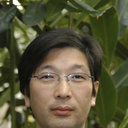Surface carbohydrate analysis and bioethanol production of sugarcane bagasse pretreated with the white rot fungus, Ceriporiopsis subvermispora and microwave hydrothermolysis.
کلید واژه ها
خلاصه
Effects of pretreatments with a white rot fungus, Ceriporiopsis subvermispora, and microwave hydrothermolysis of bagasse on enzymatic saccharification and fermentation were evaluated. The best sugar yield, 44.9 g per 100g of bagasse was obtained by fungal treatments followed by microwave hydrothermolysis at 180°C for 20 min. Fluorescent-labeled carbohydrate-binding modules which recognize crystalline cellulose (CjCBM3-GFP), non-crystalline cellulose (CjCBM28-GFP) and xylan (CtCBM22-GFP) were applied to characterize the exposed polysaccharides. The microwave pretreatments with and without the fungal cultivation resulted in similar levels of cellulose exposure, but the combined treatment caused more defibration and thinning of the plant tissues. Simultaneous saccharification and fermentation of the pulp fractions obtained by microwave hydrothermolysis with and without fungal treatment, gave ethanol yields of 35.8% and 27.0%, respectively, based on the holocellulose content in the pulp. These results suggest that C. subvermispora pretreatment could be beneficial part of the process to produce ethanol from bagasse.


